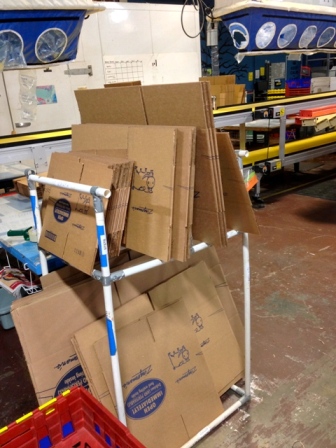If you look at Toyota’s own internal diagrams about aspects of the Toyota Way the most common symbol is a circle of Plan-Do-Check-Act or PDCA—a never ending loop. The concept was derived from the teachings of Dr. W. Edwards Deming who was teaching what he learned from his mentor Walter Shewhart.
Even a superficial glance at this wheel immediately brings to mind the scientific method. We plan the experiment, including hypotheses and the methods to test the hypothesis, we do the experiment, we check the results, and our analysis leads to specific actions to spread the results or do more research. When we venture out of the laboratory we see all too little of this systematic regimen.
One example of experimentation on the shop floor is from Zingerman’s mail order in Ann Arbor, Michigan. They sell the goods made, or purchased, by the Zingerman’s group, well known for high quality food. Most of their customer orders for the year comes in the Thanksgiving to Christmas period so developing standardized work and eliminating every second of waste is critical to being prepared for quickly training temporary workers and meeting peak demand with high quality.

Before PDCA

After PDCA
With over five years on their lean journey they have learned to experiment with new ideas on a single workstation following the PDCA process before going live for all similar workstations. The before and after kaizen photographs are for a single workstation in which the customer items are packed in a box. Selecting the right sized box requires complex judgment. In the before situation the boxes were not well organized so the worker had to search for sizes. The team and line leader designed and built the new workstation that has a place for each size. It is the result of many iterations of trial and error. At this point it was proven effective enough to begin to spread it across all the packing stations.
Humans do not seem to naturally want to follow this disciplined approach to learning and improvement. We get insight into why from the best selling book “Thinking, Fast and Slow” by Daniel Kahneman. He and his colleagues have identified a litany of ways people make suboptimal decisions based on their biases. He suggests we think about the brain as having a fast-thinking part that churns out judgments and decisions with little thought, and a thoughtful slow-thinking part that systematically comes to conclusions and makes decisions. Unfortunately the “law of lean mental effort” leads fast thinking to dominate. We must retrain our brain deliberately through practice to strengthen the slow-thinking part, which is required for effective PDCA.
Without slow thinking lean becomes an exercise in copying solutions and blindly replicating them whether or not they fit the situation. With slow thinking we can solve real problems with highly effective solutions that are owned by the work groups. Certainly many useful small improvements can be made with little thought and fast thinking is critical for getting through the day. But difficult problems required PDCA thinking, which is slow and deliberate, and the centerpiece of true continuous improvement.
